A) flood basalts in the middle of a continent
B) huge caldera explosions
C) island arcs
D) lines or clusters of volcanic islands
F) All of the above
Correct Answer

verified
Correct Answer
verified
Multiple Choice
Which of the magma systems shown is likely to contain mostly basalt? 
A) A
B) B
C) C
D) all of the locations
E) locations A and B only
G) B) and E)
Correct Answer

verified
Correct Answer
verified
Multiple Choice
A finely crystalline or glassy igneous texture indicates that:
A) there was a lot of gas in the magma
B) the rock cooled quickly
C) the rock broke apart as it flowed
D) the rock cooled slowly
E) the ash and pumice were hot and became compacted
G) A) and D)
Correct Answer

verified
Correct Answer
verified
Multiple Choice
Which of the following changes in conditions represents the main cause of melting beneath mid-ocean ridges? 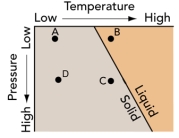
A) from A to B
B) from A to C
C) from A to D
D) from C to B
E) from D to B
G) B) and E)
Correct Answer

verified
Correct Answer
verified
Multiple Choice
Which letter in this classification table indicates the position of granite? 
A) A
B) B
C) C
D) D
E) E
G) C) and D)
Correct Answer

verified
Correct Answer
verified
Multiple Choice
What does the texture of this rock indicate about its cooling history? The magma cooled: 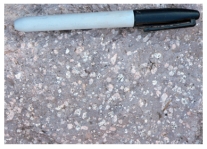
A) entirely at the surface
B) for a while at some depth and then rose to the surface where it finished solidifying
C) slowly under relatively deep conditions
D) slowly in the presence of water
F) A) and C)
Correct Answer

verified
Correct Answer
verified
Multiple Choice
Which letter in this classification table indicates the position of rhyolite? 
A) A
B) B
C) C
D) D
E) E
G) C) and D)
Correct Answer

verified
Correct Answer
verified
Multiple Choice
Which of the following changes in conditions would cause melting of a solid rock? 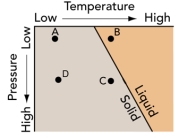
A) from A to B
B) from B to C
C) from C to D
D) from A to D
E) from A to C
G) B) and E)
Correct Answer

verified
Correct Answer
verified
Multiple Choice
Which of the following is likely to be true about the magma that formed the left volcanic feature compared to the right one in this figure? 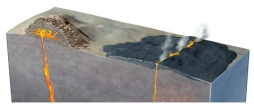
A) the magma has a higher viscosity
B) the magma has a higher silicate content
C) the magma is probably more felsic
D) all of these
F) A) and C)
Correct Answer

verified
Correct Answer
verified
Multiple Choice
Which of the following changes in conditions would represent heating during burial? 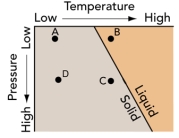
A) from A to B
B) from B to C
C) from C to D
D) from D to A
E) from A to C
G) D) and E)
Correct Answer

verified
Correct Answer
verified
Multiple Choice
Coarsely crystalline igneous textures indicate that:
A) there was a lot of gas in the magma
B) the rock cooled quickly
C) the rock broke apart as it flowed
D) the rock cooled slowly
E) the ash and pumice were hot and became compacted
G) B) and C)
Correct Answer

verified
Correct Answer
verified
Multiple Choice
How could a rock at point C be melted? 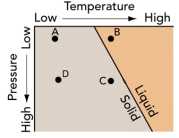
A) increase in temperature
B) decrease in pressure
C) increase in temperature accompanied by a decrease in pressure
D) all of these
F) C) and D)
Correct Answer

verified
Correct Answer
verified
Multiple Choice
The igneous feature shown in this photograph is: 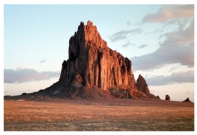
A) dike
B) sill
C) volcanic neck
D) batholith
F) None of the above
Correct Answer

verified
Correct Answer
verified
Multiple Choice
Which of the following processes could result in a felsic magma?
A) partial melting of an intermediate-composition source
B) partial melting of continental crust
C) formation and settling of mafic crystals in an intermediate magma
D) all of these
F) C) and D)
Correct Answer

verified
Correct Answer
verified
Multiple Choice
At which of the sites shown in this figure would melting probably be caused by introduction of water into hot rocks? 
A) A
B) B
C) C
D) D
E) E
G) B) and C)
Correct Answer

verified
Correct Answer
verified
Multiple Choice
Which of the following rock photographs depicts an igneous rock that trapped gas?
A) ![]()
B) ![]()
C) ![]()
D) ![]()
F) A) and B)
Correct Answer

verified
Correct Answer
verified
Multiple Choice
What is typically occurring when magmatism occurs far away from plate boundaries?
A) new oceanic crust is created at mid-ocean ridges
B) large volcanoes are built above subduction zones
C) some type of thermal disturbance is occurring in the mantle
D) all of these
F) A) and D)
Correct Answer

verified
Correct Answer
verified
Multiple Choice
A mantle plume rises because:
A) it is mostly molten
B) it is solid but less dense than material around it
C) it is molten and more dense than material around it
D) it is propelled upward by gas coming out of the magma
F) A) and C)
Correct Answer

verified
Correct Answer
verified
Multiple Choice
How does the addition of water cause melting?
A) it heats the rocks
B) it decreases the pressure on the rocks
C) it increases the temperature while decreasing the pressure
D) it changes the location of the liquid-solid boundary
F) None of the above
Correct Answer

verified
Correct Answer
verified
Multiple Choice
A volcanic neck can form by:
A) erosion of the volcano,leaving behind the solidified conduit inside the volcano
B) erosion of overlying rock layers exposing the conduit below the volcano
C) both of these
E) All of the above
Correct Answer

verified
Correct Answer
verified
Showing 21 - 40 of 103
Related Exams